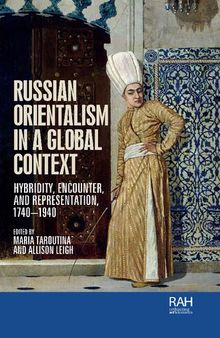 جزییات کتاب
جزییات کتاب
Russian Orientalism in a Global Context: Hybridity, Encounter, and Representation examines the various ways in which Russia’s artistic praxis was impacted by encounters—both real and imagined—with the cultures and representational and material traditions of the so-called East or Vostok. Following the Napoleonic wars, the Russian Empire’s aggressive expansionist campaigns led to the annexation of vast new lands in the Caucasus and Central Asia, resulting in the large-scale assimilation of religiously and ethnically diverse groups of people. However, given the country’s perpetually conflicted self-identification as neither fully European nor Asian, the demarcations between the “self” and the “other,” first theorized by Edward Said, remained ambiguous and elusive in the Russian context, resulting in an Orientalist mode that was prone to hybridity, syncretism, and even self-Orientalization. Accordingly, the present volume reconsiders the enduring and often fraught relationship between Russia and her non-Western neighbors and the ways in which artists, architects, and designers engaged with this relationship from the mid-eighteenth century until the 1930s. More specifically, Russian Orientalism in a Global Context interrogates how Russia’s perception of its position on the periphery of the West and its simultaneous self-consciousness as a colonial power shaped its artistic and cultural identity. It also explores the extent to which cultural practitioners participated in the discursive matrices that advanced Russia’s colonial machinery on the one hand and critiqued and challenged it on the other, especially in territories that were themselves on the fault lines between the East and the West.



 دانلود کتاب
دانلود کتاب

 جزییات کتاب
جزییات کتاب




 این کتاب رو مطالعه کردید؟ نظر شما چیست؟
این کتاب رو مطالعه کردید؟ نظر شما چیست؟
